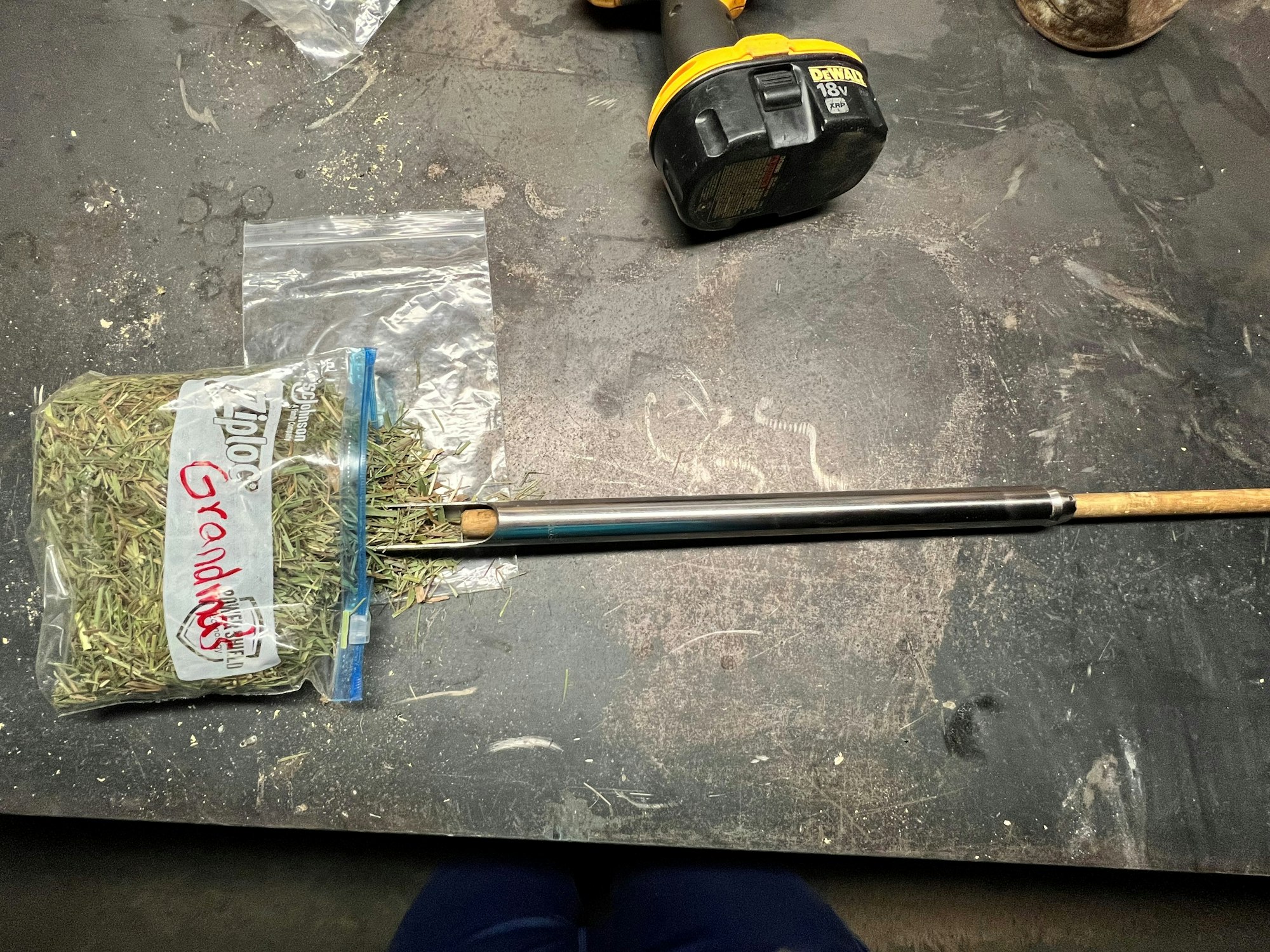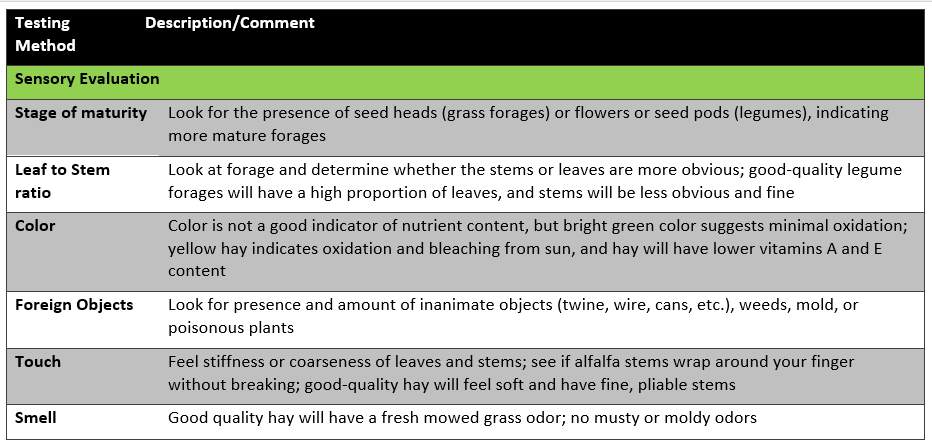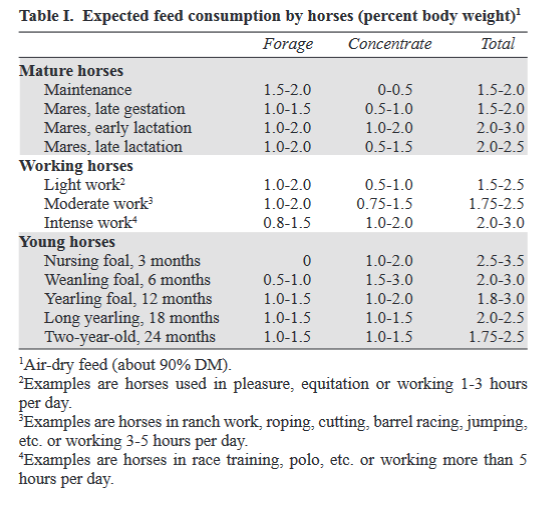Taking & Interpreting Hay Samples
Taking Hay Samples
Contact MPCD (970-724-3456 ext 4 or middleparkcd@gmail.com) to borrow our hay corer. If you want MPCD to send in your sample, bring your labeled sample(s) back with the hay corer and we will send it off for testing. The standard test we usually request costs about $33 and includes dry matter, crude protein, NDF, ADF, TDN, NE, ME, DE, and minerals.
Use a hay corer to take your sample (FOLLOW THESE STEPS)
Step 1: Use a hay corer (pic 1) to collect the sample. Reaching into a bale of hay with your hand and pulling out a sample is not accurate. A hay probe allows you to take a good cross section of the bale, getting a representative sample of both leaves and stems.

Step 2: Connect the hay corer to a cordless drill (pic 2)

Step 3: Drill it into the end of a square bale so that you are drilling through several flakes of hay. If drilling into round bales, drill through the netted or twined side of the bale so you are drilling through the layers into the core of the bale (pics 3 and 4)


Step 4: Pull the corer out of the bale and remove the corer from the drill. Place the end of the corer that went into the drill into the quart-sized Ziploc bag (there is a small hole at that end that the hay will come out of). Place the wooded plunger into the end of corer and push the hay into the Ziploc bag through the small hole (pic 5).

Step 5: Make sure the sample bag is clearly labeled with name of field and any other relevant info (i.e. date of harvest or descriptors like "rained on").
Tips for Taking the Best Hay Samples
Take cores from several bales for better representation of field or stack. Take cores from several bales within a lot of hay to get a more accurate average of hay quality. On large round bales, if the outer layer is weathered and not going to be eaten by livestock then pull away the weathered layer and sample from that point going in towards the core of the bale.
Differentiate samples of hay by timing of harvest, quality of harvest, and location. A sample of hay can be determined by species, cutting date and location. For example, hay cut in July would be a different sample than hay cut in August or September. Hay that was rained on during harvest would likely be a separate sample than non-rained on hay. Also, you might want to do different samples for different fields or haystacks.
-------
Interpreting Your Hay Results
By testing your hay, you will have the knowledge to actively manage your herd's nutritional needs like never before. Now that you have your results, WHAT DO THEY MEAN?
The most basic Forage Test will test for Moisture, Crude Protein (CP), Acid Detergent Fiber (ADF), and Neutral Detergent Fiber (NDF). Total Digestible Nutrients (TDN) and Net Energy (NE) are calculated values based on Protein and Fiber results. ALWAYS LOOK AT THE DRY MATTER BASIS COLUMN!!!
Crude Protein (CP) is a measure of the Nitrogen in the feedstuff and is commonly used as a standard for gauging protein requirements for animals. Higher Crude Protein values are better.
Acid Detergent Fiber (ADF) is a measure of Feed Digestibility while Neutral Detergent Fiber (NDF) is a measure of Feed Intake/Satiation. Lower values are better for both ADF & NDF!
The value for Total Digestible Nutrients (TDN) is the sum of all the digestible nutrients in a feedstuff and is used as a common measurement for Energy. TDN is especially useful for roughage-based diets. Net Energy (NE) also estimates energy but is more applicable to concentrate-based diets. Both of these values are calculated from ADF. With either TDN or NE, Higher values are better!
In general, forages that contain less than 70% NDF and more than 8% crude protein (Dry Matter Basis) will contain enough digestible protein and energy, vitamins, and minerals to maintain grown maintenance animals. However, growing, gestating, and lactating animals have higher nutrient requirements.
Additional Helpful Links for Interpreting Hay Results & Ideal Nutrient Levels:
- Penn State: https://extension.psu.edu/understanding-a-hay-analysis
- U of Minnesota: https://extension.umn.edu/horse-nutrition/understanding-your-hay-analysis
-
Ohio State University: https://u.osu.edu/beef/2009/10/28/forage-analysis-sampling-and-interpretation-of-results/

Table above from https://extension.msstate.edu/sites/default/files/publications/publications/P2539_web.pdf

Table above from https://extension.psu.edu/determining-forage-quality-understanding-feed-analysis

Chart abovefrom http://www2.ca.uky.edu/agcomm/pubs/id/id101/id101.pdf

Table above from https://livestock.extension.wisc.edu/articles/hay-analysis-guide-for-beef-cattle-determining-winter-feed-needs/

Table above from: https://extensionpubs.unl.edu/publication/g1781/basics-of-feeding-horses

Table above from: https://www.extension.purdue.edu/extmedia/as/as-429.html
